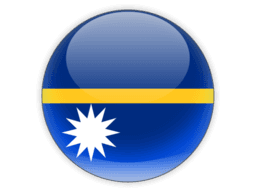
Regions of Nauru
Explore 14 regions
Cities of Nauru
Discover 7 cities across 7 regions
Aiwo District(1)
Anabar District(1)
Anibare District(1)
Baiti District(1)
Ijuw District(1)
Uaboe District(1)
Yaren District(1)
Nauru is a small island nation located in the Pacific Ocean. It is the third smallest country in the world by land area, and has a population of approximately 10,000 people. The official languages are Nauruan and English, and the currency is the Australian dollar.
Nauru is known for its phosphate mining industry, which has been a major source of income for the country since the early 20th century. The island is also home to a number of bird species, including the Nauru Reed Warbler and the Nauru Boobook.
The climate in Nauru is tropical, with high temperatures and humidity throughout the year. The island experiences a wet season from November to February, and a dry season from May to October. The best time to visit is during the dry season, when temperatures are more moderate and rainfall is low.
Tourism is not a major industry in Nauru, but visitors can enjoy the island's beaches and water sports, as well as cultural events and festivals. Nauru is also home to a number of historical sites, including the phosphate mines and the Japanese prison camp from World War II.
Visitors to Nauru must have a valid passport and visa, which can be obtained from the Nauru Embassy or Consulate in their home country. The island is accessible by air, with regular flights from Australia and Fiji.
Geography
Area
total: 21 sq km
land: 21 sq km
water: 0 sq km
Climate
tropical with a monsoonal pattern; rainy season (November to February)
Natural resources
phosphates, fish
People and Society
Population
9,852 (2023 est.)
Ethnic groups
Nauruan 88.9%, part Nauruan 6.6%, I-Kiribati 2%, other 2.5% (2007 est.)
Languages
Nauruan 93% (official, a distinct Pacific Island language), English 2% (widely understood, spoken, and used for most government and commercial purposes), other 5% (includes I-Kiribati 2% and Chinese 2%) (2011 est.)
Religions
Protestant 60.4% (includes Nauru Congregational 35.7%, Assembly of God 13%, Nauru Independent Church 9.5%, Baptist 1.5%, and Seventh Day Adventist 0.7%), Roman Catholic 33%, other 3.7%, none 1.8%, unspecified 1.1% (2011 est.)
Population growth rate
0.42% (2023 est.)
Government
Government type
parliamentary republic
Capital
name: no official capital; government offices in the Yaren District
Executive branch
chief of state: President Russ KUN (since 28 September 2022); note - the president is both chief of state and head of government
head of government: President Russ KUN (since 28 September 2022)
Legislative branch
description: unicameral parliament (19 seats; members directly elected in multi-seat constituencies by majority vote using the "Dowdall" counting system by which voters rank candidates on their ballots; members serve 3-year terms)
Economy
Economic overview
upper-middle-income Pacific island country; phosphate resource exhaustion made island interior uninhabitable; licenses fishing rights; houses Australia’s Regional Processing Centre; former known tax haven; largely dependent on foreign subsidies
Real GDP (purchasing power parity)
$149.474 million (2021 est.)
Real GDP per capita
$11,900 (2021 est.)
Agricultural products
coconuts, tropical fruit, vegetables, pork, eggs, pig offals, pig fat, poultry, papayas, cabbages
Industries
phosphate mining, offshore banking, coconut products
Exports
$31.101 million (2018 est.)
Exports - partners
Thailand 34%, Australia 16%, United States 13%, South Korea 10%, Philippines 9%, Japan 7%, France 5% (2019)
Exports - commodities
fish, calcium phosphates, low-voltage protection equipment, air conditioners, leather apparel (2019)
Imports
$94.796 million (2018 est.)
Imports - partners
Taiwan 52%, Australia 28% (2019)
Imports - commodities
refined petroleum, construction vehicles, tug boats, poultry meats, cars (2019)
International Airports in Nauru
Discover 1 major airports serving Nauru
Mark Nauru as Visited
Add Nauru to your personal travel map and track your journey around the world. Share your adventures and see your progress grow!